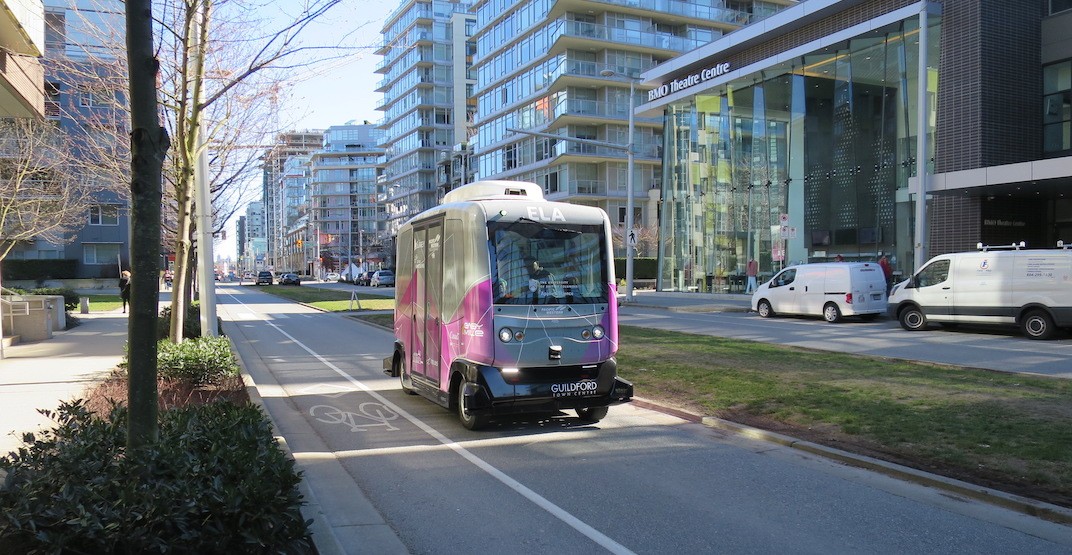BC residents lack safety confidence with driverless cars: survey

Residents in British Columbia aren’t quite ready to wholly accept the use of self-driving vehicles, according to the findings of a new TransLink-funded study by the University of British Columbia’s (UBC) civil engineering researchers.
Over 1,100 participants from across the province provided their feedback on self-driving vehicles after they viewed video clips of interactions between pedestrians and vehicles at crosswalks, with half of the vehicles labelled as self-driving and the other half as human-driven. But in actuality, all vehicles were operated by humans to enable researchers to evaluate and detect biases in perceptions.
- You might also like:
- Plan for free driverless electric shuttles at the UBC campus cancelled
- Loblaw launches Canada's first driverless food delivery trucks in Toronto
- Toronto suspends self-driving bus pilot after disastrous Whitby crash
- Montreal has opened a massive SkyTrain-inspired driverless train network (PHOTOS)
According to the researchers, 41% of participants thought pedestrians faced reduced safety and comfort levels in self-driving vehicle (SDV) interactions compared to human-driven vehicles, 34% had a more favourable perception of self-driving vehicles, and 25% reported no bias.
There were varying opinions on what types of vehicles should be allowed to self-drive on public roads, with 55% supporting shared vehicles such as taxis or shuttles and 48% for privately owned vehicles.
Furthermore, 42% support permitting self-driving vehicles to travel at the same speed as human-driven vehicles, 28% support allowing self-driving vehicles to enter pedestrian-priority areas such as near schools, 11% support allowing self-driving vehicles to operate without a person in the driver’s seat, and 8% support allowing self-driving vehicles to operate without being clearly identified to other road users, such as with exterior signage and branding.

EasyMiles’ EZ10 driverless shuttle being tested on a public road in Vancouver’s Olympic Village, 2019. (Kenneth Chan/Daily Hive)
“People who harbour anxiety or discomfort regarding new technology were more likely to hold a negative bias against SDVs. Similarly, residents in the Lower Mainland tended to adopt a more critical viewpoint, likely because there are more pedestrians in this urban region,” said Gurdiljot Gill, a UBC civil engineering PhD candidate behind the study.
The findings have led the research team to believe a gradual introduction of self-driving vehicle capabilities on public streets is required, starting with the pilot project testing of self-driving taxis, shuttles and/or buses instead of leading with private cars.
There should also be more conservative behaviour with self-driving vehicles, such as adding two to four seconds for pedestrians at crosswalks, having a human in the driver’s seat to take control in case of an emergency, and avoid school areas and designated pedestrian zones.
- You might also like:
- Plan for free driverless electric shuttles at the UBC campus cancelled
- Loblaw launches Canada's first driverless food delivery trucks in Toronto
- Toronto suspends self-driving bus pilot after disastrous Whitby crash
- Montreal has opened a massive SkyTrain-inspired driverless train network (PHOTOS)

